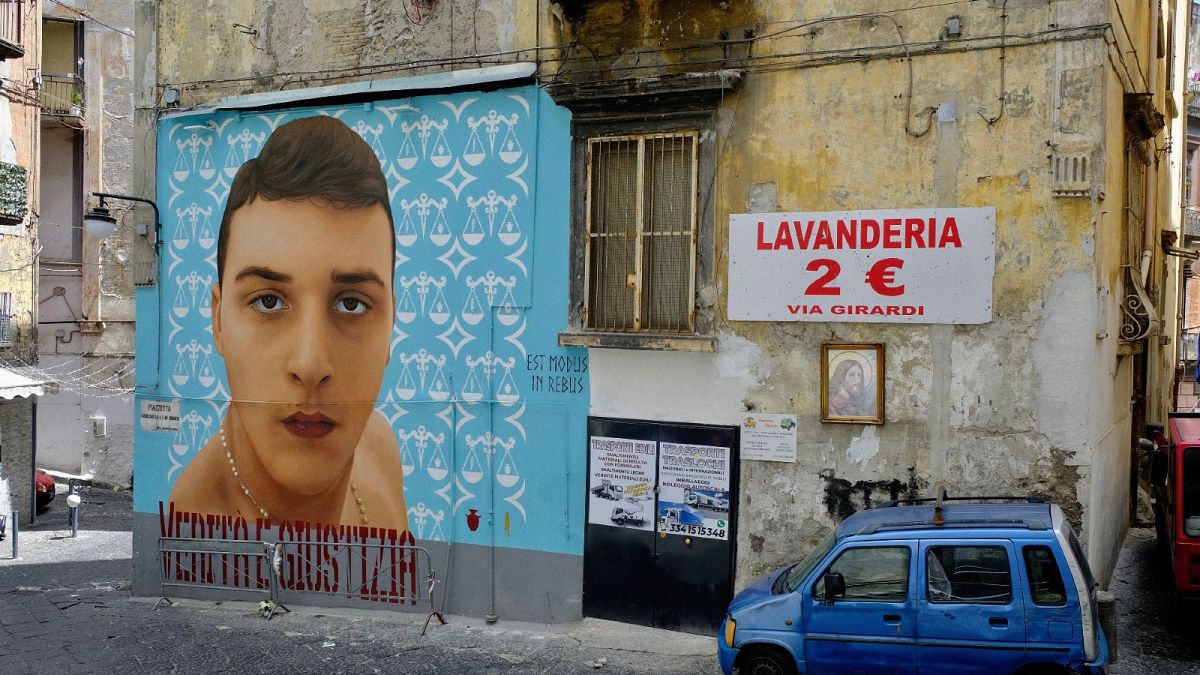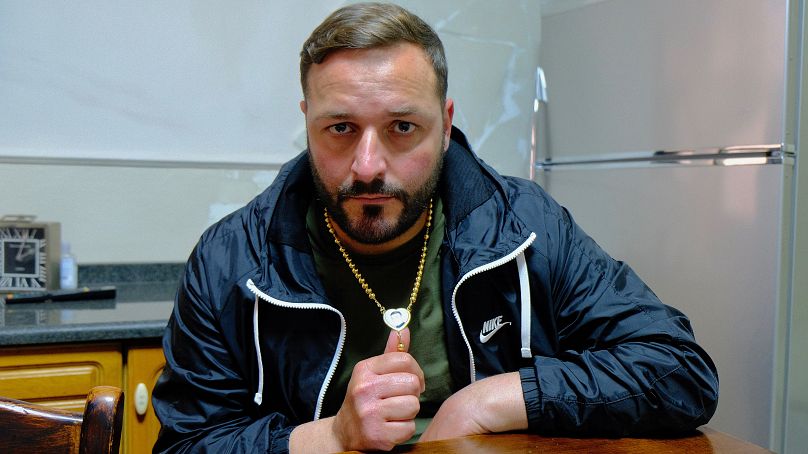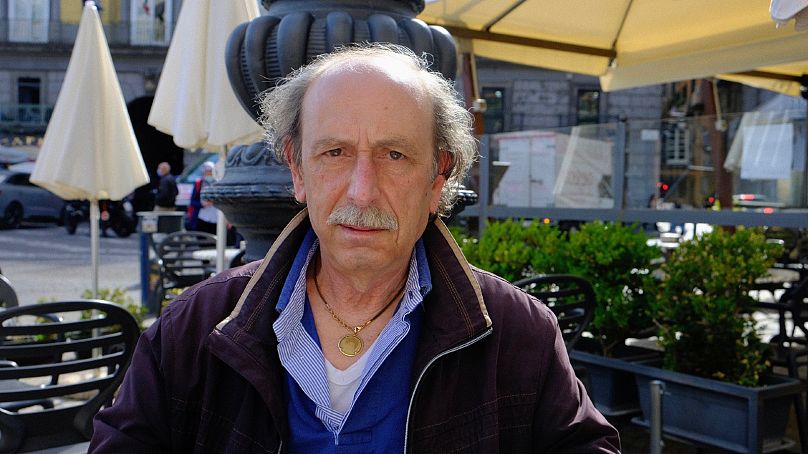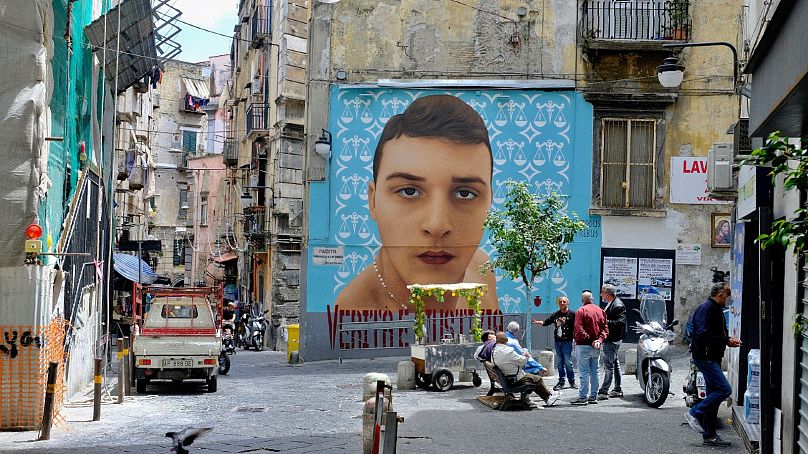Parents of children allegedly killed by police or the local mafia have been using street art to campaign for justice and warn other youngsters to steer clear of crime.
The walls of Naples’ streets have been canvases for Neapolitans for thousands of years. They are covered in love letters, cartoons and political statements.
But, in recent months, these walls have become a battleground for parents grieving the deaths of their children, allegedly killed by police or the local mafia.
Families of Camorra-killed youngsters say making murals of children suspected to have died at the hands of police is not a good idea. They argue it glorifies children that are part of the same mafia problem that allegedly killed their offspring.
The row was sparked last March by the death of Ugo Russo. The 15-year-old threatened a policeman with a toy gun and tried to steal his watch. The officer is accused of killing Russo.
Months after Ugo’s death, his family painted a mural in the city’s working-class Spanish quarters neighbourhood to draw attention to the uncertainty surrounding his death.
“This mural is our cry for truth and justice,” said Vincenzo Russo, 38, Ugo's father. “We want to let people know that the death of Ugo could have been avoided.
"He made a mistake but he wasn’t involved in any organised crime. It’s been 15 months and we have still not received his autopsy report.”
In February, the city government ordered two murals, including Ugo's to be removed. Ugo's family appealed to a judge -- pointing out that it had obtained approval from the building owner -- and managed to stop the process.
The family of another child allegedly killed by police, Luigi Caiafa, had not received such permission and his mural was removed.
Although guerrilla street art is very common in Naples, the city has the authority to remove anything that does not have formal approval. But getting the green light can be long and bureaucratic. This is why some families choose to paint their murals without city approval to get their message out faster.
Camorra killings
Between 1982 and 2015 in Campania alone, 183 innocent people were killed by the Camorra, Naples' mafia. Nineteen of them were under the age of 18.
Gaetano de Pandi’s 11-year-old son died after being hit by a stray bullet in June 1991.
Still grieving his loss, De Pandi would like to have his son painted on the city’s walls to serve as a warning to other youths who might be tempted to participate in crime.
“It would be a testimony that would show that my son was an innocent victim of organised crime,” De Pandi says.
“And maybe the kids could see it and think twice to choose a path away from criminality.”
Siani explains that the issue surrounding the murals isn’t that people think Ugo’s family shouldn’t know what happened to their son, but that there are dozens of families that have been waiting for the same thing for decades and they feel left behind.
“What about the hundreds of families in Campania who have had innocent loved one’s killed by the mafia? Many of them haven’t had truth or justice either and they don’t have their murals. According to some people, if we have to do a mural of someone, it should be the innocent victims."
The consensus on all sides is that something must be done to prevent children from getting involved in crime in the first place, but how the city can do that is a question that continues to hang over Neapolitans.
Russo believes the city can do something to prevent what happened to his son from happening again.
But, he said, reacting after a child's death isn’t enough.
“They can do something if they want,” he said. “Not when these things happen but before, because if they do it after, it’s already too late.”
Youth unemployment problem
Gianmario Siani, the nephew of Giancarlo Siani, a journalist killed by the Camorra in 1985, said that over the years there has been a tendency to throw people in jail rather than invest the money in preventing young children from poor and working-class neighbourhoods from getting involved in crime.
“The fact of Ugo, a 15-year-old who tried to steal someone's watch with a toy gun is evidence of this educational poverty,” Siani says. “Which is not the fault of poor Ugo because he was just a kid. It’s our fault, it’s all of our fault as well as the fault of the state. And Ugo is just one, there are many more like him.”
The southern Italian region of Campania, of which Naples is the capital, has one of the highest youth unemployment rates in Europe at 47.9%.
This, paired with unequal distribution of federal funds to southern Italy and corruption at the local level, means children turn to organised and petty crime.
Every weekday, Uncovering Europe brings you a European story that goes beyond the headlines. Download the Euronews app to get a daily alert for this and other breaking news notifications. It's available on Apple and Android devices.



